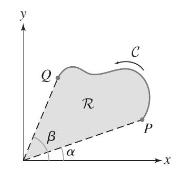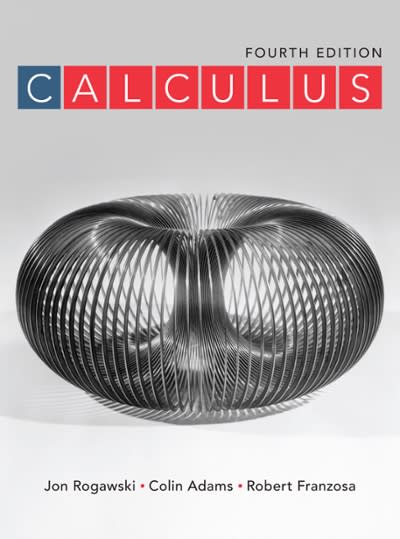Suppose that the curve (C) in Figure 7 has the polar equation (r=f(theta)). (a) Show that (mathbf{r}(theta)=langle
Question:
Suppose that the curve \(C\) in Figure 7 has the polar equation \(r=f(\theta)\).
(a) Show that \(\mathbf{r}(\theta)=\langle f(\theta) \cos \theta, f(\theta) \sin \thetaangle\) is a counterclockwise parametrization of \(C\).
(b) In Section 11.4, we showed that the area of the region \(\mathcal{R}\) is given by the formula
\[
\text { area of } \mathcal{R}=\frac{1}{2} \int_{\alpha}^{\beta} f(\theta)^{2} d \theta
\]
Use the result of Exercise 37 to give a new proof of this formula. Evaluate the line integral in Eq. (1) using \(\mathbf{r}(\theta)\).
Data From Exercise 37
In Section 17.1, we showed that if \(C\) is a simple closed curve, oriented counterclockwise, then the area enclosed by \(C\) is given by
\[
\text { area enclosed by } C=\frac{1}{2} \oint_{C} x d y-y d x
\]
Suppose that \(C\) is a path from \(P\) to \(Q\) that is not closed but has the property that every line through the origin intersects \(C\) in at most one point, as in Figure 7. Let \(\mathcal{R}\) be the region enclosed by \(C\) and the two radial segments joining \(P\) and \(Q\) to the origin. Show that the line integral in Eq. (1) is equal to the area of \(\mathcal{R}\). Show that the line integral of \(\mathbf{F}=\langle-y, xangle\) along the two radial segments is zero and apply Green's Theorem.


Step by Step Answer:






